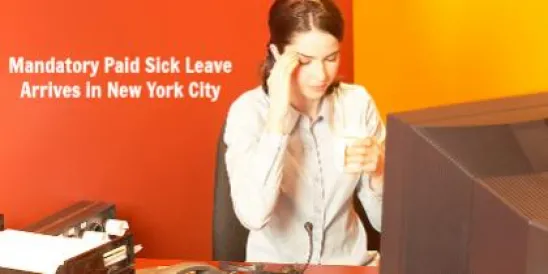The San Antonio, Texas City Council has approved revisions to the city’s sick and safe leave ordinance, which is now scheduled take effect on December 1, 2019.
As we previously reported, in the face of legal challenges to the law, the City Council had agreed to delay the effective date of the ordinance (previously slated for August 1, 2019) to review how the ordinance will affect businesses and employees and to make necessary changes.
Updates under the revised ordinance include the following:
-
Any individual who performs work for pay within the City of San Antonio for a covered employer is eligible to accrue sick and safe leave, unless otherwise exempted under the law. Independent contractors, paid and unpaid interns, employees subject to a collective bargaining agreement, and employers subject to the Railway Labor Act are exempt from coverage under the law.
-
Under the original ordinance, eligibility was limited to individuals who perform at least 80 hours of work in a year.
-
-
Employees who are typically based outside the City of San Antonio (that is, for more than 50% of their work hours in a year) but who perform work in the city on an occasional basis are covered by the ordinance only if they perform more than 240 hours of work in San Antonio within a year.
-
A modified accrual schedule for sick and safe leave will apply across all businesses, regardless of size. Specifically, employees will be eligible to accrue one hour of paid sick and safe leave for every 30 hours worked, up to 56 hours per year.
-
The original ordinance would have required larger businesses to provide up to 64 hours of leave while smaller businesses would have been required to provide up to 48 hours of leave.
-
-
While sick and safe leave begins to accrue from the first working day for new employees, employers may require that new employees wait up to 90 days before using any accrued time.
-
Under the original ordinance, the waiting period for new employees was capped at 60 days and was only applicable if the employer could establish that the employee’s term of employment was at least one year.
-
-
The definition of a covered family member under the ordinance will now include an employee’s: (i) spouse, domestic partner, or different-sex or same-sex significant other; (ii) any other family member within the second degree of consanguinity or affinity; and a member of the covered employee’s household, as well as a minor’s parents, regardless of the sex or gender of either parent. In addition, the concept of parenthood “is to be liberally construed without limitation as encompassing legal parents, foster parents, same-sex parent, step-parents, those serving in loco parentis, and other persons operating in caretaker roles.”
-
Under the original ordinance, a covered family member included an employee’s spouse, child, parent, or any other individual related by blood or whose close association with the employee is the equivalent of a family relationship.
-
-
An employer may not request medical documentation or other verification of the use of paid sick or safe leave under the ordinance until an employee’s fourth consecutive day of using leave. Employers may also request documentation where they reasonably suspect abuse of sick and safe leave.
-
Under the original ordinance, documentation was allowed only after three consecutive days of absence.
-
-
The revised ordinance specifies that sick and safe leave under the ordinance “is a fringe benefit as defined by the Texas Labor Code and not a wage or a component of salary.” To that end, the ordinance “does not require the payment of sick and safe leave upon separation from employment and it does not require that sick and safe leave be calculated as an increase to salary or wages of an employee.”
While the ordinance is now slated to take effect on December 1, 2019, penalties will not be assessed until April 1, 2020 except in cases of retaliation against an employee.




 />i
/>i
